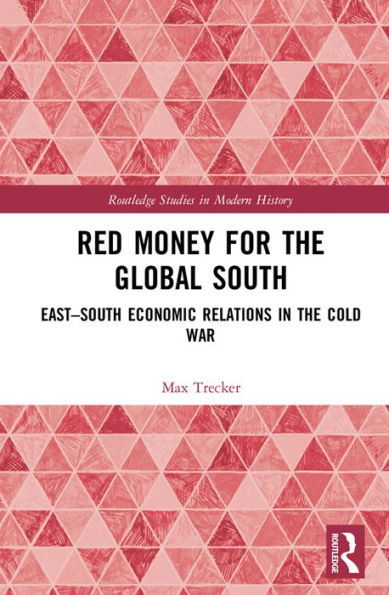Red Money for the Global South explores the relationship of the East with the “new” South after decolonization, with a particular focus on the economic motives of the Council for Mutual Economic Assistance (CMEA) and other parties that were all striving for mutual cooperation.
During the Cold War, the CMEA served as a forum for discussions on common policy initiatives inside the so-called “Eastern Bloc” and for international interactions. This text analyzes the economic relationship of the East with the “new” South through three main research questions. Firstly, what was the motivation for cooperation? Secondly, what insights can be derived from CMEA negotiations about intrabloc and East‒South relations alike? And finally, which mutual dependencies between East and South developed over time?
The combination of analytical narrative and engagement with primary archival material from former CMEA states, and India as the most prestigious among the former European colonies, makes this text essential reading for students and instructors of Cold War history, Economic History, and international relations more generally.
Red Money for the Global South explores the relationship of the East with the “new” South after decolonization, with a particular focus on the economic motives of the Council for Mutual Economic Assistance (CMEA) and other parties that were all striving for mutual cooperation.
During the Cold War, the CMEA served as a forum for discussions on common policy initiatives inside the so-called “Eastern Bloc” and for international interactions. This text analyzes the economic relationship of the East with the “new” South through three main research questions. Firstly, what was the motivation for cooperation? Secondly, what insights can be derived from CMEA negotiations about intrabloc and East‒South relations alike? And finally, which mutual dependencies between East and South developed over time?
The combination of analytical narrative and engagement with primary archival material from former CMEA states, and India as the most prestigious among the former European colonies, makes this text essential reading for students and instructors of Cold War history, Economic History, and international relations more generally.

Red Money for the Global South: East-South Economic Relations in the Cold War
254
Red Money for the Global South: East-South Economic Relations in the Cold War
254eBook
Related collections and offers

Product Details
| ISBN-13: | 9781000037425 |
|---|---|
| Publisher: | Taylor & Francis |
| Publication date: | 02/20/2020 |
| Series: | Routledge Studies in Modern History |
| Sold by: | Barnes & Noble |
| Format: | eBook |
| Pages: | 254 |
| File size: | 3 MB |
